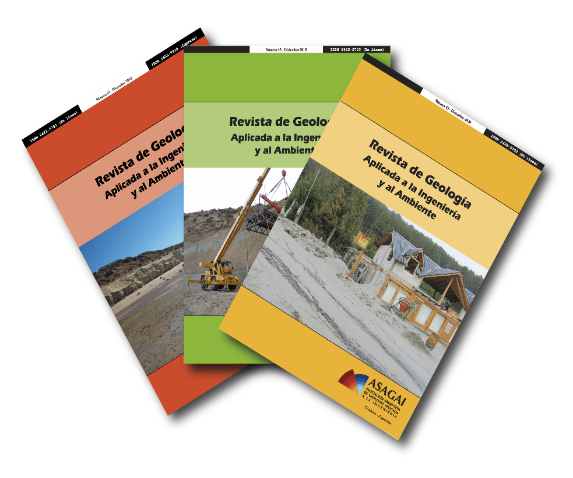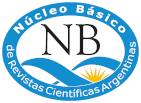Territorial Expansion of Bahía Blanca: Characterization of the Peri-urban Area in the western sector of the City
DOI:
https://doi.org/10.59069/na9h6a80Keywords:
geographic information system, city, expansionAbstract
The city of Bahía Blanca is in full expansion and growth, which is why the need arises to carry out adequate planning and organized territorial ordering. In this way, prevent and/or mitigate consequences derived from the interaction of the land to be occupied and the civil works and land uses carried out there during its progress. Although there is data in the area on soil properties (surface and underground hydrology, granulometry, geomorphology, uses), an integrated study of them is necessary since their interrelationships define the behavior of the terrain. In this research, it is proposed to carry out the corresponding cartography using a GIS (Geographic Information System) based on the available data and new results obtained on land use and lithological, sedimentological and geomorphological characteristics of the studied terrain. This study is considered of interest for the area, which constitutes a possible expansion zone for the city.
The software used allows results and data to be dumped in the form of layers and displayed simultaneously, carrying out an efficient study. In this way, providing the information to identify and characterize the suitability of the soil for engineering purposes, contributing to a responsible and sustainable urban expansion, avoiding geological risks. The combination of data through this methodology allows the analyzed parameters to be integrated, and in this way constitute a tool to predict the behavior of the terrain, establish guidelines for the management of urban expansion.
References
Aliotta, S. Ginsberg, S.S., Vecchi, L.G. (2017). Paleocanales pleistocenos en el subsuelo marino del estuario de Bahía Blanca, Argentina. 17º Congresso Latino-Americano de Ciências do Mar – COLACMAR 2017. Anais dos Resumos. Pag. 1296-1297. ISBN: 978-85-66184-06-8. Balneário Camboriú. SC/Brasil.
Berry, J.K. (1999). GIS Technology in Environmental Management: a Brief History, Trends and Probable Future. Handbook of Global Environmental Policy and Administration.
Bolt, S.J. y Pye, K. (2001). GRADISTAT: a grain size distribution and statistics package for the analysis of unconsolidated sediments. Earth Surface Processes and Landforms, 26: 1237-1248.
Caló, J., Fernández, E., Marcos, A. y Aldacour, H. (1999). “Construcción de mapas
geológicos ingenieriles a partir de conocimientos previos compilados en un Sistema de Información Geográfico”. Revista de Geología Aplicada a la Ingeniería y al Ambiente, Número 13, p. 1-10
Caló, J., Fernández, E., Marcos, A. y Aldacour, H. (2000). Mapas temáticos de la ciudad de Bahía Blanca y problemas edilicios asociados. Revista de Geología Aplicada a la Ingeniería y al Ambiente. Publicación oficial de la ASAGAI, 15:30-40.30.
Caló, J., Fernández, E., Marcos, A. y Sequeira, M. (2004). Medidas de mitigación de los impactos ambientales producidos por lluvias intensas en la ciudad de Bahía Blanca. gpg SINERGIA 2004. XVII Congreso Argentino de Mecánica de Suelos e Ingeniería Geotécnica, III
Congreso Argentino de Presas y Aprovechamientos Hidroeléctricos, VIII Simposio de Geología Aplicada a la Ingeniería y al Medio Ambiente y Quinta Reunión Sobre Preparación y Uso de Mapas Temáticos. ASAGAI - Asociación Argentina de Geología Aplicada a la Ingeniería, CAP - Comité Argentino de Presas, SAIG - Sociedad Argentina de Ingeniería Geotécnica. Córdoba, Argentina. Actas CD SINERGIA 2004. Sesión Medio Ambiente. 13 páginas.
Carrica, J. (1998). Hidrología de la cuenca del arroyo Napostá Grande, provincia de Buenos Aires (Hidrogeology of arroyo Napostá Grande basin) (Tesis Doctoral inédita). Universidad Nacional del Sur, Departamento de Geología, Bahía Blanca.
Cerana, J. L. y Varela, H. (2013). Propuesta de revalorización del arroyo Napostá partir de su integración a la dinámica urbana de la ciudad de Bahía Blanca. Bahía Blanca, Universidad Tecnológica Nacional.
Di Martino, C., Albouy, R. y Aliotta, S. (2022). Evaluación geotécnica preliminar de las unidades geológicas del frente costero portuario de Bahía Blanca, Buenos Aires, Argentina. Revista de Geología Aplicada a la Ingeniería y al Ambiente (48), 15–21.
Folk, R. (1974). Petrology of Sedimentary Rocks. Lubbock, University of Texas, 128pp.
Folk, R.L., Andrews, P.B. and Lewis, D.W. (1970). Detrital sedimentary rock classification and nomenclature for use in New Zealand. New Zealand Journal of Geology and Geophysics, 13: 937-968.
Folk, R. y Ward, W. (1957). Brazos River Bara study in the significance of grain size parameters. Journal of Sedimentary Research, 27, 3-27. https://doi.org/10.1306/74D70646-2B21-11D7-8648000102C1865D
Mastrandrea, A., y Pérez, M. I. (2022). Propuesta Metodológica para la Gestión Integral del Riesgo Hídrico: El caso de la Cuenca del Arroyo Napostá Grande (Argentina). Papeles de Geografía, (67), 6–26. https://doi.org/10.6018/geografia.470311.
Scheffer, J. C. (2004): Los recursos hídricos y el abastecimiento de agua. Región Bahía Blanca. CEPADE, Bahía Blanca, 132 pp.
Urriza, G; Garriz, E. (2014). ¿Expansión urbana o desarrollo compacto? Estado de situación en una ciudad intermedia: Bahía Blanca, Argentina. Revista Universitaria de Geografía, vol. 23, núm. 2, julio-diciembre, 2014, pp. 97-123. Universidad Nacional del Sur. Bahía Blanca, Argentina.
Zanello, V., Scherger L., Lafont D., Pera Vallejos, G. y Lexow C. (2022). Características hidrogeológicas de las unidades geoambientales identificadas en la ciudad de Bahía Blanca. Congreso XI Argentino de Hidrogeología. Libro Actas Parte II. Pág. 540-547.
Zavala, C., García, L. y Di Meglio, M. (2005). Redes de drenaje y paleoclimas en el Cuaternario del sur de la provincia de Buenos Aires September 2005. XVI Congreso Geológico Argentino. Volume: CD-ROM, Artículo Nº 156. 2pp. La Plata.
Downloads
Published
Issue
Section
License
Copyright (c) 2024 Claudina Di Martino, Laura Gabriela Vecchi

This work is licensed under a Creative Commons Attribution-NonCommercial-ShareAlike 4.0 International License.
Attribution - Non-Commercial - Share Alike (by-nc-sa): No commercial use of the original work or any derivative works is permitted, distribution of which must be under a license equal to that governing the original work.










